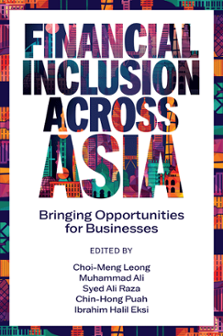
Index
Financial Inclusion Across Asia: Bringing Opportunities for Businesses
ISBN: 978-1-83753-305-3, eISBN: 978-1-83753-304-6
Publication date: 6 December 2023
Citation
(2023), "Index", Leong, C.-M., Ali, M., Raza, S.A., Puah, C.-H. and Eksi, I.H. (Ed.) Financial Inclusion Across Asia: Bringing Opportunities for Businesses, Emerald Publishing Limited, Leeds, pp. 135-139. https://doi.org/10.1108/978-1-83753-304-620231011
Publisher
:Emerald Publishing Limited
Copyright © 2024 Choi-Meng Leong, Muhammad Ali, Syed Ali Raza, Chin-Hong Puah and Ibrahim Halil Eksi
INDEX
- Prelims
- Chapter 1: Women's Financial Inclusion and Women's Financial Literacy: Bibliometric Analysis
- Chapter 2: Unlocking the Power of Technology: A New Era of Financial Inclusion in the Industrial Revolution 4.0
- Chapter 3: Financial Inclusion and COVID-19: Opportunities and Challenges
- Chapter 4: Unlocking Human Perspective: The Psychological Ripple Effects of Financial Inclusion on Asian Communities and Future Avenues
- Chapter 5: Significance of Fintech for Microfinance Institutions (MFIS): Anatomical Linkages of Fintech with Value Chain of MFIS and its Implications
- Chapter 6: Artificial Intelligence, Digital Finance, and Financial Inclusion: A Conceptual Framework
- Chapter 7: Mobile Banking in the Context of Developing Asian Countries: A Thorough Perspective Based on Customer's Intention, Benefits, Challenges, and Security Issues
- Chapter 8: Empowering Communities: Enhancing Financial Literacy and Inclusion Across Asia
- Chapter 9: Fintech an Opportunity or Opportunity Missed by Developing Sides of the World: A Special Emphasize on Fintech Use and Prospects in Pakistan
- Chapter 10: A Bibliometric Review of Financial Inclusion in Asia
- Index